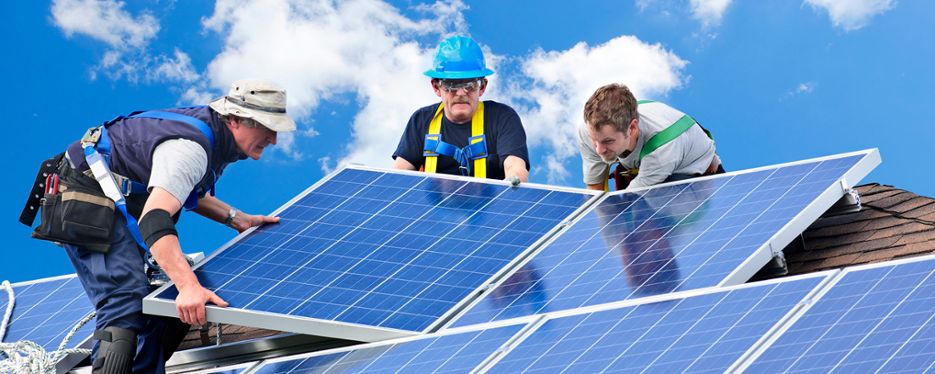Large parts of the energy system are directly dependent upon the weather. Changes in the climate will therefore require changes in the energy system. Such changes will not necessarily be negative – they could also represent new or increased opportunities.
Extreme weather events have a major effect on the energy supply, as high temperatures, flooding, strong winds and storms can cause operational disruptions. Many of the interruptions to the electricity supply can be attributed to weather-related problems.
Climate change will result in certain events taking place with greater frequency and severity than is currently the case. Although storms are not expected to become worse in Sweden by the changing climate, they are (and will continue to be) a significant cause of electrical outages due to the felling of trees across power lines.
Electricity and biofuels are important to the industrial, housing and service sectors. Whilst outages in the electricity supply have direct consequences, disruption to the supply of biofuels takes a lot longer before it affects the user.
During the summer, there is expected to be an increased need for cooling, as a result of the warmer climate. However, electricity usage will remain greatest during the winter, as a result of the considerable consumption of electricity for heating purposes. There may be a reduction in the need for heating in the context of a milder winter climate in the future.
The effects on Sweden’s energy system will vary throughout the country – for example, the need for cooling during the summer is expected to be greatest in the south, where it is likely that the most severe heatwaves will occur.
Increased precipitation
Increased precipitation, together with less ground frost, can increase the risk of decay and rust on important infrastructure. This may result in a reduction in the service life of electricity pylons and buried power cables, with increased sensitivity to, for example, strong winds and storms. These changes will also have an impact on systems for natural gas and district heating by means of increased corrosion and structural changes to the ground as a result of increased amounts of rain.
Climate change is expected to affect the production of hydroelectric power. Changes to the levels of precipitation and variations in the occurrence and presence of snow can result in changes to water inflow, thereby changing the conditions for production. The inflow of water into reservoirs may even out throughout the year, or perhaps even increase in annual terms. As a result of milder and shorter winters, there might be a reduction in spring floods, which could also occur earlier in the year. Such changes will not necessarily represent vulnerability problems for the energy supply – they could represent new opportunities.
Rising average temperatures
Prolonged periods without precipitation, in conjunction with high temperatures, may have an impact on hydroelectric power. Sweden’s experience in the summer 2018 provides one example of this, where several reservoirs reported low water levels.
A milder climate with longer growing seasons could provide greater potential for the production of bioenergy. A milder climate would enable new species, but also pests, to spread throughout Sweden. At the same time, established species may disappear. It is hard to predict the consequences of the changes that will take place in ecosystems, and how it might affect the production of bioenergy.
Warmer seawater could cause problems for the cooling of Sweden’s nuclear power plants. This occurred in the summer 2018, at the same time as the production of hydroelectric power reached a low point as a result of drought.
Examples of climate adaptation
Hydroelectric power plants can be dimensioned in order to cope with higher water levels in conjunction with cloudbursts and longer periods of rain.
To meet the needs for cooling during warm summers, cooling facilities can be used in the building of new properties for vulnerable risk groups, such as old people’s homes and hospitals.
In order to avoid the many outages in the electricity supply caused by storm-felled trees, cables can be buried beneath the ground instead of being carried overhead.
Incorporating consideration to climate change in the expansion or development of infrastructure could also become one aspect of climate adaptation – for example, by mapping the areas at risk of flooding.
